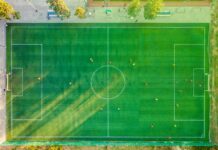Omega-3 fatty acids play many vital processes play a significant role. Abundant in oily fish, are, for example, a component of cell membranes and starting material for various hormones. In addition, they have anti-inflammatory and may protect against cardiovascular disease, cancer and other diseases.
In addition, there is evidence that these fatty substances strengthen the muscle after a physical workout. Very much less well researched, if you counteract a unwanted muscle wasting. From a medical point of view, such an effect would be of great value. Because diseases or accidents, which tie the patient to the bed or in a plaster force, lead to a serious loss of muscle mass. This makes it difficult, however, to come to the recovery again quickly on the legs. For a little more clarity, the results of a study by researchers from Canada now.
The involved test persons, a total of 20 healthy young women had agreed to wear for two weeks to a leg, a rigid Bandage to consume the provided food and also daily of the test substance, to take a coconut-flavored liquid. What the subjects did not know the inside: half of them the test substance contained greater amounts of Omega-3 fatty acids, in a daily dose of three grams of eicosapentaenoic acid (EPA) and two grams of docosahexaenoic acid (DHA). The other half were appropriate amounts of plain sunflower oil.
shrinking to nearly Double
Like Chris McGlory of the Department of kinesiology of the canadian Macmaster University in Hamilton and his colleagues in the journal “the FASEB Journal” reports, was the thigh muscle of the immobilized leg of all women after two weeks of immobility thin, though not to the same extent. In the case of the Omega-3-fatty acids-supplied trial participants it declined by only eight per cent, in the subjects of the comparison group, on the other hand, fourteen percent, or almost Double.
Also in regard to the Regeneration of the muscles after removal of the Bandage, the Omega-3 fatty acids as beneficial. The thigh muscles of the women of this collective, within two weeks, which was not the case of the sunflower-seed-subjects in the case recovered. The manner in which Omega-3 the muscle atrophy could contain it, it is not clear from the study. Leading the way is the observation may be that the treated subjects produced during the entire experimental period, more muscle proteins than the other women, at the same time, but not less muscle tissue reduced. According to the authors, the Omega-3 is likely to encourage fatty acids, therefore, rather the building of muscle mass. The extent to which their adoption is true, of course, still open. In order to obtain an answer to this question, we need larger studies.




